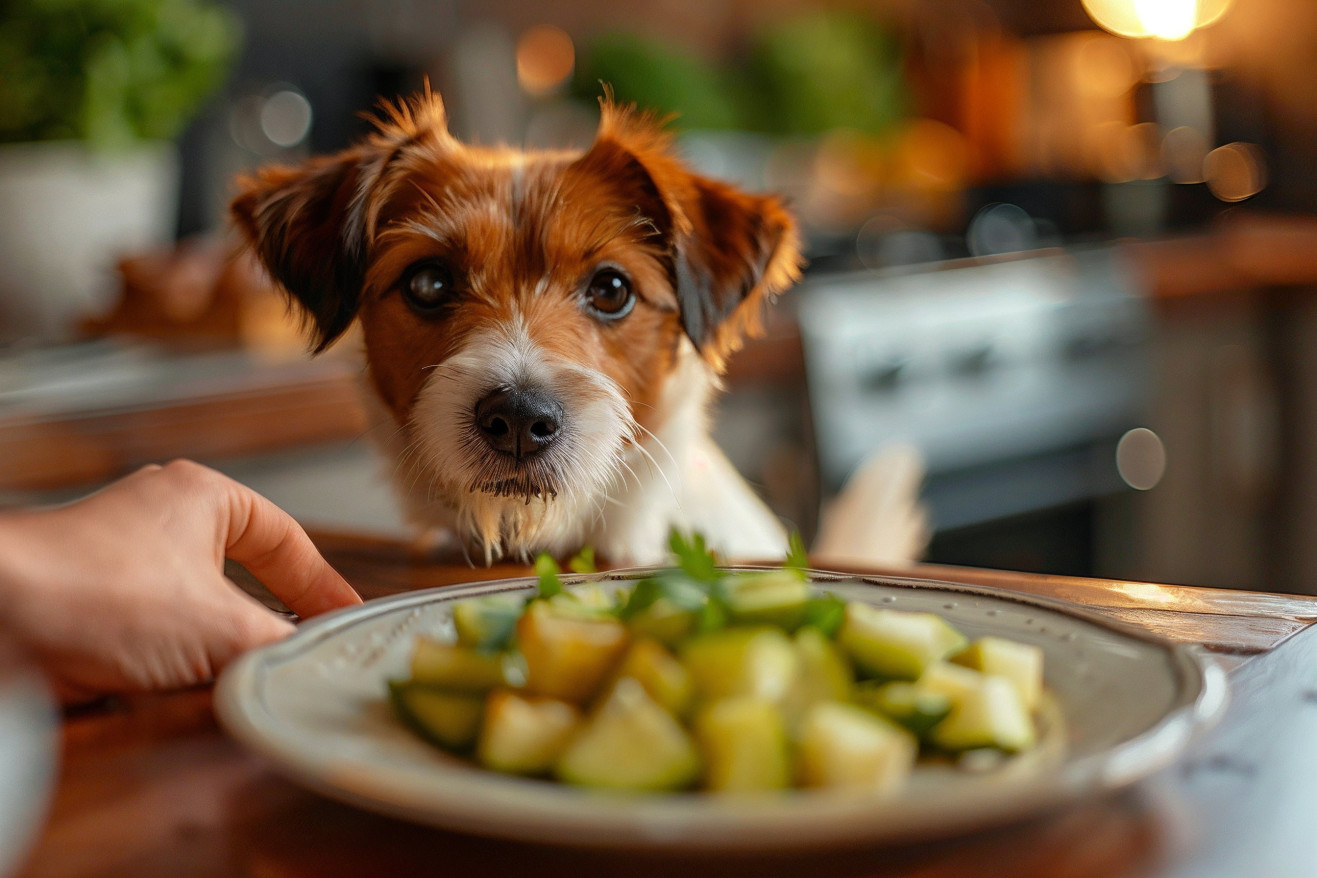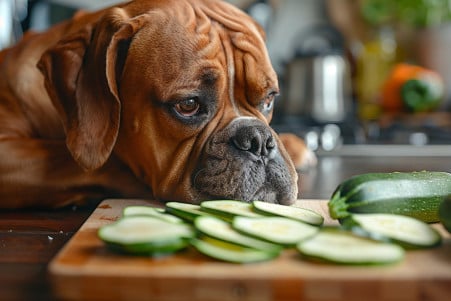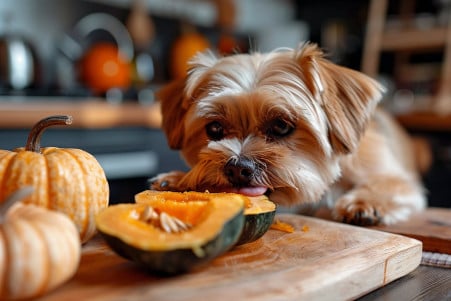Can Dogs Eat Chayote? A Vet Weighs In on Safety and Benefits
12 June 2024 • Updated 11 June 2024

Even though chayote may look like a healthy vegetable option for your dog, it's important to know the risks and benefits of feeding this unusual gourd to your pet. Chayote is safe for dogs to eat in moderation if it's prepared correctly—cooked, with the seeds removed, and served plain without any seasonings or other ingredients. However, the high fiber content can lead to digestive upset, including gas and diarrhea, if dogs eat too much.
To give you a better idea of what to expect, we've referenced veterinary professionals and dog nutrition experts. They'll explain how much chayote is safe to feed your dog, how to prepare it to make it easier for dogs to digest, and which dogs may not be able to eat it at all due to specific dietary issues. By the end, you'll know exactly how to make this tasty gourd a part of your dog's diet.
Can dogs eat chayote?
How to Prepare and Serve Chayote to Dogs
If you want to give your dog chayote, it's important to prepare it properly. Way Canina recommends boiling or steaming chayote for 5-7 minutes to make it easier for dogs to digest. The AKC also notes that the skin, thorns, and seeds should be removed to avoid choking or digestive hazards.
Once the chayote has been cooked and the skin and seeds have been removed, the flesh can be mashed and mixed in with your dog's regular food or served as a plain, unseasoned treat. As with any new food, especially for dogs with sensitive stomachs, it's important to introduce chayote gradually and watch for any signs of an upset stomach or other issues, as recommended in this expert response.
The amount of chayote that you should give your dog will depend on their size, age, and overall health. WebMD notes that a serving size for humans is one medium chayote or one cup of cubed chayote, but you should ask your vet for guidance on how much to give your dog. If you follow these guidelines for preparing and serving chayote, you can make sure that your dog safely enjoys the health benefits of this nutritious food.
Potential Risks and Side Effects of Feeding Chayote to Dogs
Although chayote is considered safe for dogs, it can lead to digestive upset, including vomiting, diarrhea, and stomach upset, if eaten in large amounts, according to this article. The high fiber content of chayote can also cause gas, bloating, and other gastrointestinal issues in some dogs, according to PetsFoodSafety.com.
Dogs with food sensitivities, allergies, or certain medical conditions may not be able to eat chayote or may need to be introduced to it under the supervision of a vet, according to this in-depth guide. In addition, the seeds and skin of the chayote should be removed before it's given to dogs because they can be a choking hazard and cause blockages in the intestines, according to the article from Greg.app.
To make sure your dog doesn't have a bad reaction to chayote, it's best to introduce it gradually and in small amounts while watching for any signs of a problem, according to the Manila Standard article.
Nutritional Benefits of Chayote for Dogs
Chayote is a low-calorie, nutrient-dense food that can offer dogs a variety of vitamins, minerals, and antioxidants. As reported by Healthline, one whole chayote squash (203 grams) has 39 calories, 9 grams of carbohydrates, 2 grams of protein, and 4 grams of fiber - 14% of the Reference Daily Intake (RDI). It's also high in folate, with 47% of the RDI, and is a good source of vitamins C, K, and B6.
The fiber in chayote can help with digestion and weight loss, according to VeryWellFit. Furthermore, the phytochemicals and antioxidants in chayote have anti-inflammatory, anti-cancer, and anti-aging effects, per the PharmEasy blog. Chayote can also help lower blood sugar, improve circulation, and promote heart health in dogs.
Serving Sizes and Moderation
The fellow.dog site notes that chayote should be introduced slowly and in moderation due to the risk of digestive problems such as gas and diarrhea. Veterinary professionals advise that chayote should make up no more than 10% of a dog's daily food intake.
WebMD notes that a typical serving is one medium chayote or one cup of cubed chayote. However, serving sizes will depend on the dog's age, size, and health status. Smaller dogs and puppies will likely require smaller servings, while larger dogs may be able to eat a bit more.
As noted by Way Canina, it's essential to talk to a veterinarian or a dog nutritionist to get personalized recommendations for how much chayote your dog can eat based on their individual requirements. However, by paying attention to the moderation recommendations, you can ensure that your dog gets the nutritional benefits of chayote without overdoing it.
Conclusion: How to Add Chayote to Your Dog's Balanced Diet
Chayote can be a nutritious and safe addition to a dog's diet when properly prepared and served in moderation. It provides valuable nutrients, fiber, and potential health benefits, but should be introduced gradually and in appropriate portions. Consult with a veterinarian or canine nutritionist, especially for dogs with existing health conditions or sensitivities.
Chayote should be part of a balanced diet that includes high-quality commercial dog food and other safe, nutritious treats and supplements. Monitor your dog's reaction when introducing chayote, and adjust serving sizes or discontinue if any adverse effects are observed.


